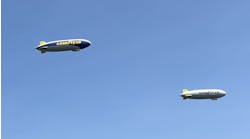Sustainability is now a strategic business initiative with measurable objectives for most large organizations, and many manufacturers have published goals to be carbon neutral by 2050. To meet these milestones, they need to look beyond their self-generated carbon footprint and will expect the middle tiers of their supply chain to document and reduce greenhouse gas emissions.
Mid-tier manufacturing firms who implement a formal sustainability and carbon footprint management program will be well-positioned to become the preferred vendors for larger manufacturers. And all manufacturers can significantly cut costs by reducing materials, energy, and labor expenditure—while getting a jump start on meeting emerging government regulations aimed at reducing greenhouse gases.
The question for many manufacturers is, “How do I start?” For reporting and tracking, a relatively straightforward place to begin is through the enterprise resource planning (ERP) software already managing their operations. But first it’s important to understand a few fundamentals.
The Fundamentals of Carbon Footprint Accounting
Carbon emissions are denoted as a carbon dioxide equivalent or CO2e, the weight of CO emissions with an equal weight to greenhouse gases in their global warming potential. The United States EPA lists 18 factors that typically comprise businesses’ carbon footprint. For most manufacturers, these include purchases of energy, raw materials, supplies and logistics. It’s possible to find the CO2e content of most materials and activities on the internet. For example, manufacturing one pound of steel can create 1.8 pounds of CO2e.
Carbon emission sources are categorized as “scopes,” where Scope 1 describes greenhouse gases directly produced by a company. Scope 2 covers purchased energy. Scope 3 includes emissions from the production of goods and services purchased from suppliers. That’s why corporate customers and large manufacturers need to understand their suppliers’ carbon footprints.
Calculating Carbon Footprint
Step one in calculating carbon footprint is identifying the major contributors. Because carbon footprint and purchasing spend often are highly related, the top categories of purchasing spend are frequently the top contributors to carbon footprint. A general goal is baselining, tracking and reducing the carbon footprint from 80% of the carbon-related spend.
There are two general approaches to estimating a baseline carbon footprint:
The spend or revenue reporting method calculates carbon footprint by using purchased data, online carbon equivalent tables and/or specific equivalents provided by suppliers to produce a baseline. Then, if an upstream customer requests carbon footprint data, the company provides the pro-rata portion of the baseline based on the customers’ purchase volume as a percent of total sales. So, if the baseline carbon footprint of a $20 million manufacturer is 13.23 million lbs. of CO2e, the footprint reported for a customer with a $5 million account would be 25% or 3.3 million lbs. of CO2e. This reporting method is very common, but it can be inaccurate on a customer-by-customer basis.
Activity-based carbon accounting calculates carbon footprint per unit of production and has two advantages. First, it accurately calculates the carbon footprint of an item, ascribing the correct footprint without influences from non-carbon-related factors that determine the selling price. Second, it directly measures the carbon input to a product so that standard root cause analysis and corrective action measures can be implemented to reduce the footprint on a systematic basis. For these reasons, activity-based reporting is considered the gold standard of carbon footprint reporting, which upstream customers will prefer, and eventually, require.
How an ERP System Can Help
Within a manufacturing environment, each production element of a finished good carries some inventory of carbon footprint, which ERP systems are well suited to track as they would other items in inventory. Ideally, the ERP system will be able to track raw materials, machine time, and labor.
Following is a method for using an ERP system to track the carbon inventory of finished products on a per-unit basis:
1. Create carbon inventory items in the ERP system’s inventory item master with each item’s cost representing the carbon emission for that item per unit of measure. For instance, one pound of plastic can have a carbon footprint of 2 pounds CO2e. The average US cost for one kilowatt of electricity is 0.85 pounds of CO2e, and ground shipping costs 0.36 pounds of carbon per ton-mile.
2. Augment bills of manufacture (BOM) for items with carbon inventory items and their respective consumption per finished good unit. Raw material carbon impacts are easy to determine since the BOMs already contain the quantities required to calculate carbon content.
3. Estimate the energy content (impact) for an item in one of three ways:
- The simplest is taking the operation’s entire energy cost (in CO2e ) and dividing that total footprint by the total number of work center operating hours to derive an average CO2e per operating hour. Ascribing energy costs to production hours also includes the costs of lighting, heating, air conditioning, auxiliary equipment, etc.
- A more nuanced method is performing the calculation above but then splitting the average value into high, medium and low work center CO2e factors. For instance, high consumption equipment is assigned 150% of the average energy while efficient work centers are assigned 75%. This enables work center energy efficiencies to be recognized and rewarded.
- The most accurate, but least practical method is calculating each work center’s exact energy operating.
4. A quick test of the materiality is to use the business’ overall shipping expense; then convert those dollars to CO2e conversion value of 0.5 lbs. CO2e per dollar of shipment cost. If shipping cost is material, a manufacturer can obtain accurate estimates from its carriers when adding the item to the ERP system.
5. Apply these methods to have carbon cost per item automatically calculated by the ERP system’s costing and inventory control systems. These costs can even be printed directly on shipping labels and documentation. And dashboards can be created to make daily carbon output and progress towards goals readily visible to everyone in the company.
In this way, with a proper ERP set-up, manufacturers can treat the carbon footprint or carbon inventory of production operations just as they would any other business expense.
Reducing Manufacturers’ Carbon Footprint
With the activity-based method of calculating carbon footprint by item, manufacturers can use their ERP systems to apply the same lean manufacturing and continuous improvement principles to emissions reductions as they do to initiate routine cost reductions and quality improvement projects. Some examples:
- Use production monitoring to quickly identify operations that produce excess scrap or use excessive machine time.
- Manage inventory to prevent overstocking raw materials or finished goods.
- Forecast frequently to plan efficient production and avoid extra costs and energy consumption.
- Capture, recycle and/or reuse production byproducts and scrap.
- Optimize route efficiency while moving raw and finished goods
- Replace paper documents and reports with digital documents
To position themselves as responsible, preferred providers, manufacturers need to measure the impact and progress of their sustainability initiatives in reducing emissions, costs and waste while increasing productivity and efficiency. ERP systems treat the carbon footprint of manufacturing activities like any other business expense, making the recording and reporting of environmental impacts routine and efficient.
Steve Bieszczat is responsible for DELMIAWorks brand management, demand generation and product marketing. He holds an engineering degree from the University of Kansas and an MBA from Rockhurst University.





